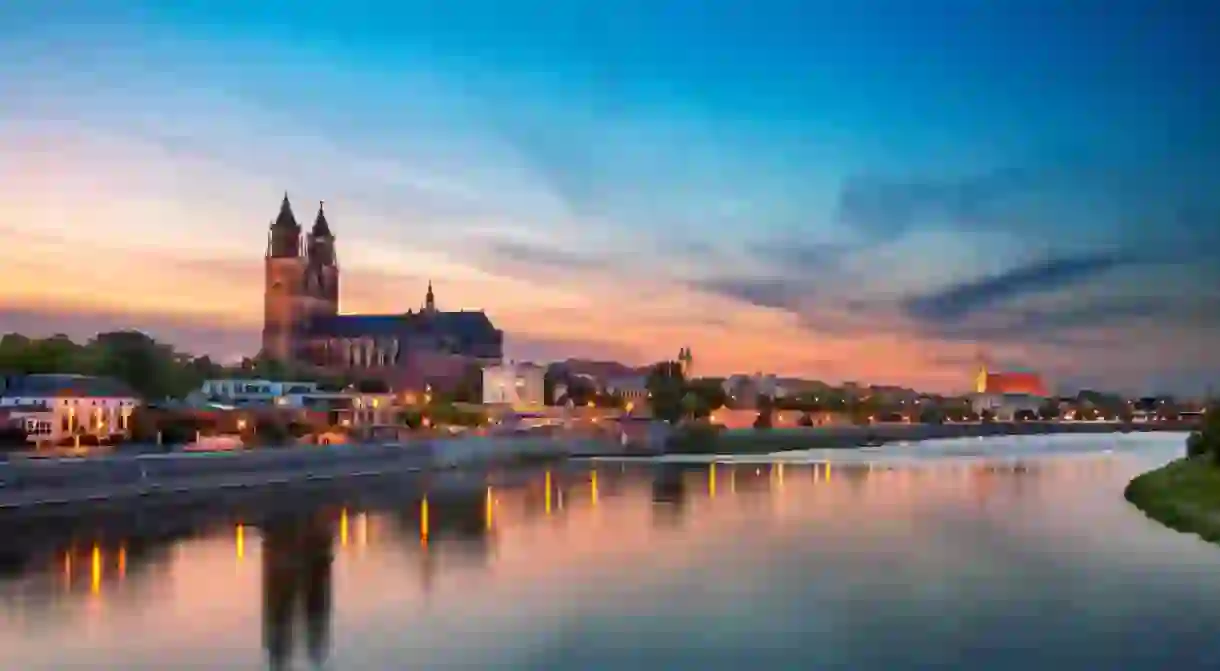The Top Things to See and Do in Magdeburg, Germany

The German city of Magdeburg is one of contrasts. Known for being the historic city of Emperor Otto, it’s also a hub of science and research – a similar striking difference can also be seen in its architecture, where ancient structures sit alongside imaginative futuristic buildings. Read on to unravel the many wonders of this lesser-known but immensely interesting city.
The Hundertwasser Building
Building

The Hundertwasser Building (or Grüne Zitadelle, or Green Citadel) is the most eye-catching architecture of Magdeburg‘s skyline. The building stands out from the historic buildings of Magdeburg because of its unusual, contemporary and super-imaginative style of architecture. The Green Citadel, symbolizing the relationship between human beings, nature and architecture, houses ‘dancing windows’, undulating floors, roof meadows and a whole lot of greenery. It consists of individually-designed residential apartments, a hotel, shops, restaurants, cafés and courtyards, and offers guided tours. Thanks to the gleaming golden globes on its roof, the building can be spotted from miles away.
Magdeburg Cathedral
Cathedral

The soaring Magdeburg Cathedral defines the skyline of Magdeburg and is known as the very first Gothic cathedral in Germany. Travelers are drawn to this cathedral for its stunning facade, the lavish stonework of its interior and its vast treasure trove of paintings and sculptures from various eras. This cathedral is also the final resting place of Emperor Otto. To understand its history and architecture in depth, try signing up for a guided tour by emailing the cathedral.
Magdeburg Old Town
Market
Magdeburg old town was almost completely razed to the ground during World War II, and consequently, several beautiful late Renaissance and Baroque buildings that once adorned this square were lost forever. Today, this square is the liveliest section of the city, with locals and tourists filling the rows of shops and restaurants with merry chatter. Situated in the northwestern corner of the market place is the Buttergasse, a medieval guild house and one of the biggest Romanesque buildings in the country. Other noteworthy landmarks of this square are the sculpture of a horseman (believed to be Emperor Otto the First) and the Rathaus.
Waterway Junction
Bridge
Magdeburg’s Water Junction is a unique ensemble of Europe‘s longest canal bridge (918 meters (3,012 feet)), the water-conserving lock Rothensee, the double ship lift Hohenwarthe and several connecting canals. It connects the waterways of Hanover, Magdeburg and Berlin, and and unfailingly delights tourists with its engineering genius. Should you wish, you can explore the waterway and the beautiful landscape of Magdeburg from a cruise boat.
The Elbauenpark
Park

This spot, known as the 90-hectare ‘green lungs’ of Magdeburg, was the proud winner of the prestigious title of Germany’s second most attractive park in 2005. The park has enough attractions to keep families happily occupied all day long. The most popular landmarks here are the wooden Millennium Tower (the world’s tallest structure of its kind) and the ‘Seebühne’ Lake Stage, alongside a Green Path that has been designed to educate young visitors about the environment in an interesting, engaging way. Additionally, Elbauenpark boasts sports centers, flower beds, playgrounds, lounging and sunbathing areas, themed gardens, artworks and sculptures, and more.
Monastery of Our Lady
Museum

The Art Museum housed in the Monastery of Our Lady is not only the favorite destination for art lovers in Magdeburg, but is also deemed to be among the most significant venues for contemporary art and sculpture in the German state of Saxony-Anhalt. Moreover, the elegant monastery itself, the oldest surviving landmark in Magdeburg, is considered to be a jewel of German Romanesque architecture. In addition to the splendid permanent exhibition of sculptures ranging from medieval to modern times, the museum also hosts temporary exhibitions on a regular basis.
Magdeburg Cultural History Museum
Museum
The reputation of Magdeburg Cultural History Museum as a splendid museum of art has transcended the boundaries of Saxony-Anhalt and spread all across the country. Though the building itself suffered heavy damage during World War II, the artwork escaped destruction as it was stashed away in a safe storage space. Currently, the museum houses paintings ranging from the 15th to the 20th centuries, alongside furniture, ceramic items and artefacts from various eras. The museum also hosts temporary and touring exhibitions.
Check out these tours in Magdeburg, and further afield in Germany.













